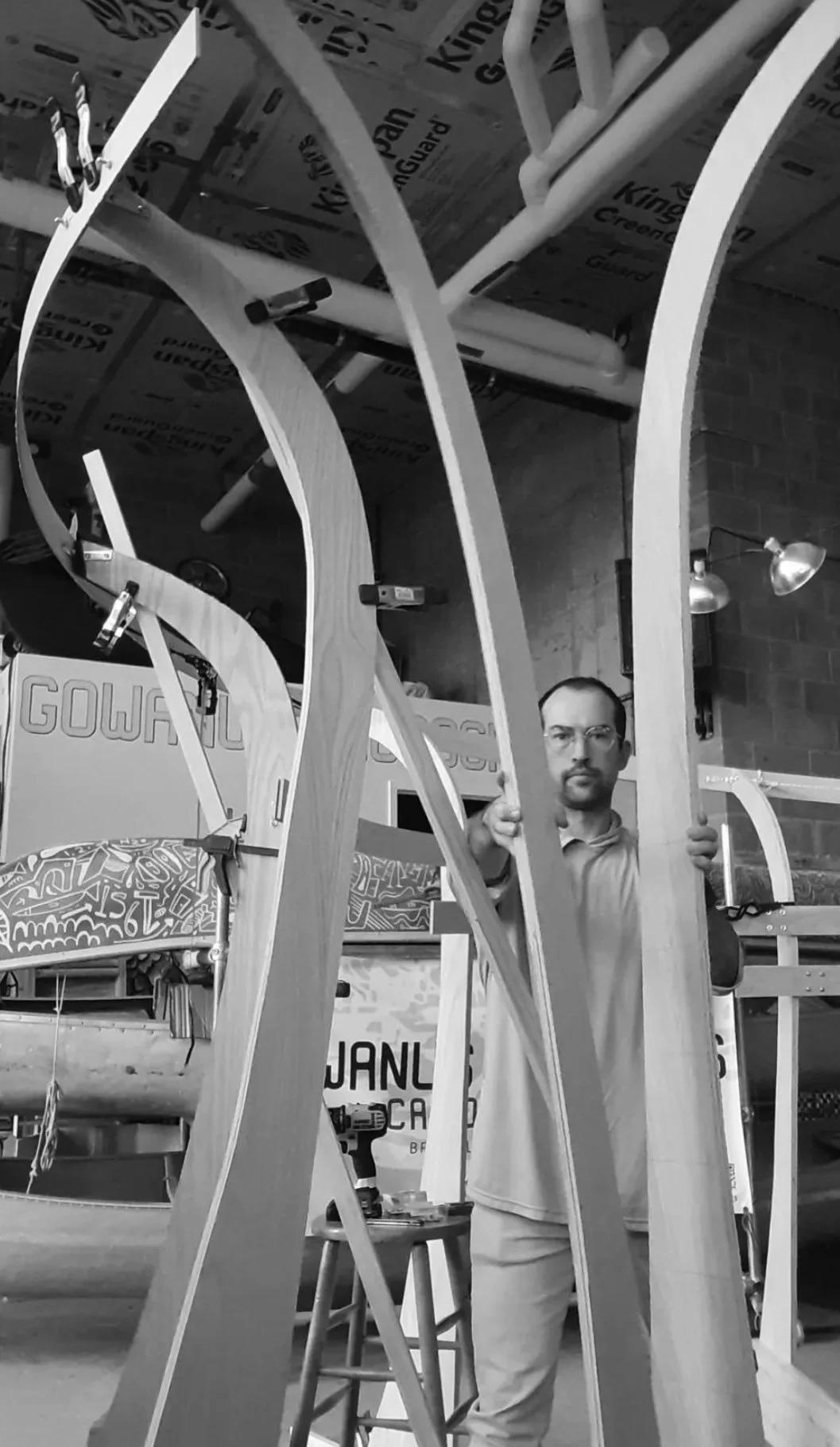Artist Jos Prol in conversation with Brad Vogel
Brad V: So, Jos, when did you first see a piece of driftwood while out paddling on the Gowanus and think....I see something sculptural, I see a story?
Jos P: Hard to pinpoint a moment but ever since I began paddling out into Gowanus Bay several years ago, the sight of solitary, floating branches gave me a sense of empathy and perhaps a little melancholy. I saw driftwood as a solitary traveler. I wondered how long it had drifted, what and where its life had been and what storms, depths, encounters with marine life, boats and other shores it had experienced. I wondered about the story. The sculptural thought was not immediate but one that grew over time seeing the same individuals regularly that had washed up at our dock. I had started to set aside those who stayed and we as a club began to adorn our waterfront yard with them. In a way the thought to tell a story with them was because they inserted themselves into my consciousness and routine. They drifted to me.
Brad V: So once that artistic inspiration began to emerge, how did you actually go about transforming your own life from being an architect working at an engineering firm to a full-time artist? As I see you work take shape, especially given the intricacy and scale of some of it, I'm all the more impressed with the pivot.
Jos P: Transforming my sense of self has taken time but I had an urgency and frankly a need to change. The work of a designer in the building profession today is performed almost exclusively in front of a screen. Coupled with remote working shifts of recent years and a disconnection from boots in site the work left me feeling isolated and listless. I wasn't connected to what was being built and I felt rootless. I needed a better sense of place. Volunteering with the Dredgers and growing love for Gowanus gave me that. The art flows from that connection, spending time around the canal and reshaping objects with my hands.
Brad V: I get that! And given all the pixelation in both your sculptures and your giant paintings - another entire wing of your work that we should talk about - tell us more about the colors and hues you use. Where does they emerge from as you create your work?
Jos P: Significance of color has an origin but evolves over time for me. I expect the meaning to grow and shift in the future. I began with a consideration of the object needing a face that expressed its travel, arrival and experience of time. RGB as a starting point is fundamental for me in this series of work, referencing its seaborne past: Port, Starboard, Aft (memory of water) as well as its arrival into a technology-saturated world (the three color filters of a screen). I used 4 subsets in each of these families for a total of 12 colors, perhaps not important to the tree but fundamental in measuring time for the rest of us. Cutting through a tree reveals a synopsis of its history, its rings. I'm drawing inspiration from this and telling an abstract new time-story. These three families of color have grown to represent new cycles of time for me as well greens of sustained growth, blues of stasis-cum-drift and reds of crisis and opportunity. I think part of being alive is experiencing these cycles. This meaning has become part of my carved pixels and inspired my paintings.
Brad V: Wow. This approach is almost musical in its quality and depth - a tone poem of sorts - thanks for explicating that, Jos. One more thing: can you tell us a bit about where you actually did the work of transforming the driftwood and the canvas into your art?
Jos P: Ah, space. Some say it's the most valuable asset for an artist, also not known for affordability in New York. Acquiring work space was a direct result of community involvement and supportive family, managed with a bit of ingenuity and flexible attitude. Relationship with the Canal has grown from my volunteer involvement with Gowanus Dredgers Canoe Club. Two years ago I was recognized and appointed as First Mate. In this role I've taken a lot of responsibility to steward and improve club space and manage logistics of many events we host. There was an opportunity. I could both be more available to serve club needs and aquire workspace if I kept tidy and adopted a flexible work schedule. Most labor in early months was carried out at our boathouse and dock. During summer when that space became more active and less available I shifted to set up an apartment studio for small work and started periods of retreat to an old barn on my sister's property about 50 miles northwest of the city. This was so valuable for me; ability to focus for days at a time, connection with family and ability to talk through process and vision with unconditionally supportive people. The paintings, I planned meticulously and produced in folded parts in my apartment. Never actually saw the full work until I hung it for show!
Brad V: Amazing. Last bit, actually: in brief, are there any secrets embedded in your work?
Jos P: Oh, of course!
Brad V: Ha! Thanks for your time. Really looking forward to your opening reception.

